You are getting more and more unsolicited advertisements on your screen or your Windows 11 computer is suddenly slowing down and behaving strangely. Then there is a good chance that your Windows 11 computer or tablet has contracted a virus or malware. This is not only directly dangerous for your computer but also for your personal data. For example, a virus can let a hacker into your computer who can access all your files. It gets even more serious when you are doing internet banking. Certain types of viruses can steal your bank details and PIN codes and cause serious financial damage.
These are the most common types of malware for Windows 11:
Viruses
Computer viruses are the mother of all malware: conceived in the 1940s, they were already spotted in practice in the 1970s. Like real viruses, they need a host: viruses attach themselves to clean files and can infect other clean files, spreading themselves.
Worms
Worms, like viruses, can generate functional copies of themselves. But where a virus needs a host file, worms are self-contained pieces of software that can spread without a host program or human help.
Trojan horses
Trojan horses disguise themselves as legitimate software or are hidden within it. They often operate completely under the radar, opening a back door somewhere to let another type of malware in.
Ransomware
Ransomware takes your files hostage by encrypting them or locking you out of your own system. After paying the ransom (usually in bitcoins) you get a “key” to unlock your files.
Spyware
Spyware is malicious code that quietly works its way into the background of your system and transmits sensitive information, such as passwords, credit card numbers or browsing habits.
Adware
Adware sneaks into your computer system and shows you ads, usually in the form of pop-ups. It is by no means malicious with a view to stealing or damaging data. However, it can undermine your security, making it easier for other malware to penetrate.
Bots
Bots, short for internet robots, are worm-like programs that can spread themselves. Once they have crawled into your computer system, they connect to a server. That server controls a whole network of infected computers, or a botnet. Botnets are used, for example, for DDoS attacks, bitcoin mining or password collection.
It is impossible to prevent infection by malware one hundred percent, partly because it is very difficult to protect yourself against zero day attacks (which exploit software leaks for which no patch exists). If you have your basic security in order, then you greatly reduce the chance of becoming a victim of malware. You can do this by taking the following measures.
Social engineering is the manipulation or seduction of people for the sake of cybercrime. More and more companies have their technical security in order, so cybercriminals are resorting more and more to social engineering methods such as phishing. It is good to make employees aware of this. For example, are you approached by a stranger or by someone you know who is behaving strangely? If so, don’t click on hyperlinks and don’t open any attachments.
By extension: make sure your employees are aware of what they open, where they surf to and what they download. Malware can lurk anywhere, for example via drive-by downloads, USB sticks or unsolicited emails. All alarm bells should go off, for example, when you are asked to allow Office macros or when the letter O in a web address has been replaced by the number 0.
Antivirus software protects your computer system from malware and other forms of cybercrime by scanning files for known malware code and detecting notable program behavior. Important in the context of bring your own device (BYOD) and working from home: employees’ private devices used for business purposes should also be equipped with malware detection software.
Software such as operating systems, applications and firmware can contain security vulnerabilities. Hackers can use these open backdoors to install malware on your computer. Once a vulnerability is discovered, the software vendor makes a patch or update to close the backdoor. Hackers have all kinds of tools to scan these types of vulnerabilities, so always install updates right away.
A firewall is a security system between two networks, for example your company network and the Internet. Based on a set of rules, the firewall identifies and blocks suspicious network connections, which can stop malware, among other things. Because configuring a firewall is specialized work, more and more companies choose a managed firewall.
Network segmentation and backups are damage control rather than preventative measures. If you segment your network using virtual network zones (VLANs), you ensure that malware cannot get outside a zone. Malware that enters via the guest network, for example, cannot then affect the sensitive data on the internal company network.
Backups are your last resort if you do get hit by malware. Backups replicate data so that you can restore your files or digital systems after they have been damaged, altered or deleted by malware. In addition to frequent backups, it’s also important to test restoring backups. For a robust backup policy, use the 3-2-1 rule: make three copies, keep them in at least two locations, with at least one location offline.
Remove malware from Windows 11 computer
Malwarebytes is an essential tool in the fight against malware. Malwarebytes is able to remove many types of malware that other software does often miss, Malwarebytes is costing you absolutely nothing and is fully compatible with Windows 11. When it comes to cleaning up an infected Windows 11 computer, Malwarebytes has always been free and I recommend it as an essential tool in the battle against malware.
Install Malwarebytes, follow on-screen instructions.
Click Scan to start a malware-scan.
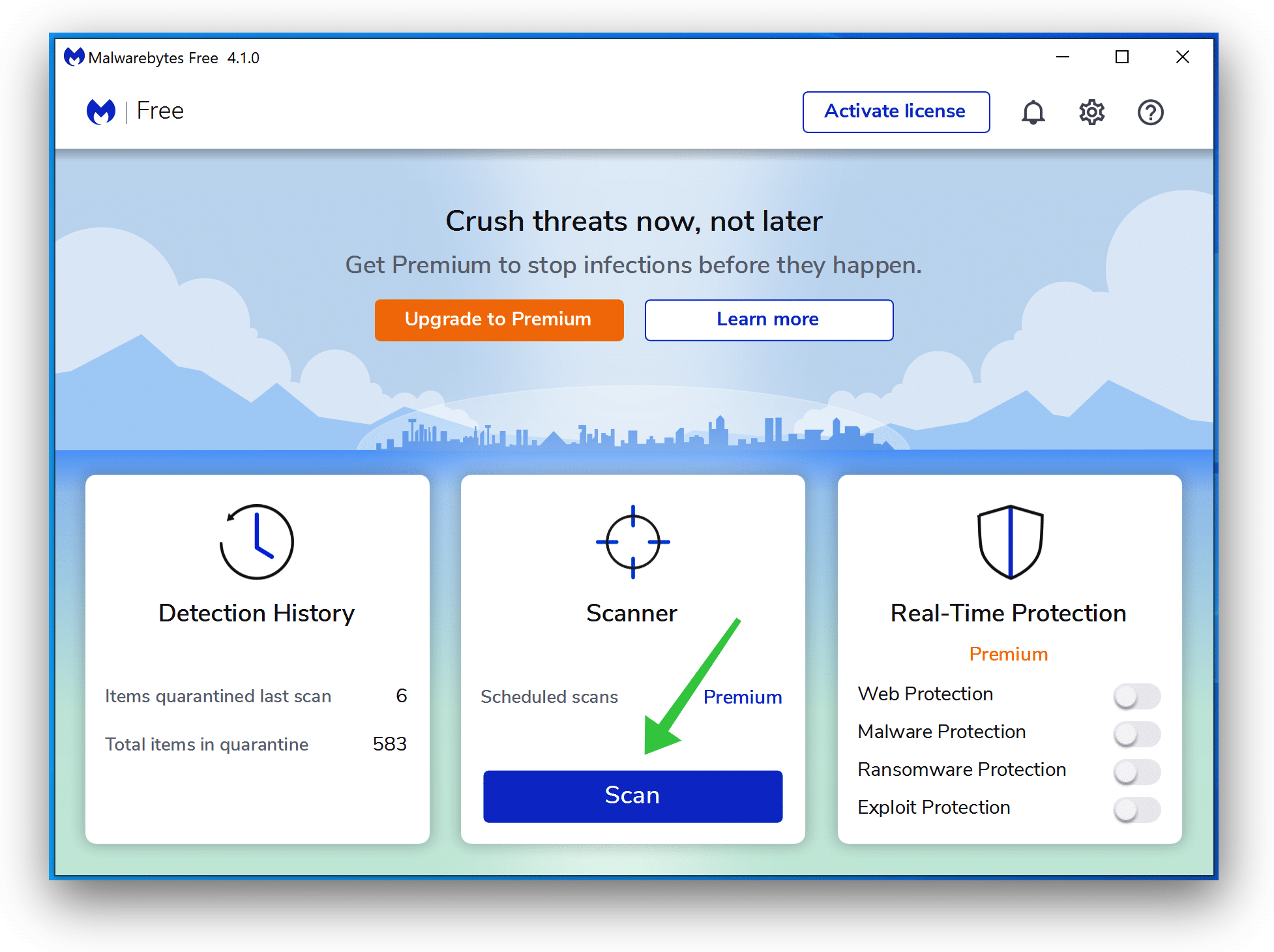
Wait for the Malwarebytes scan to finish. Once completed, review the B2o6b39taril.com adware detections.
Click Quarantine to continue.
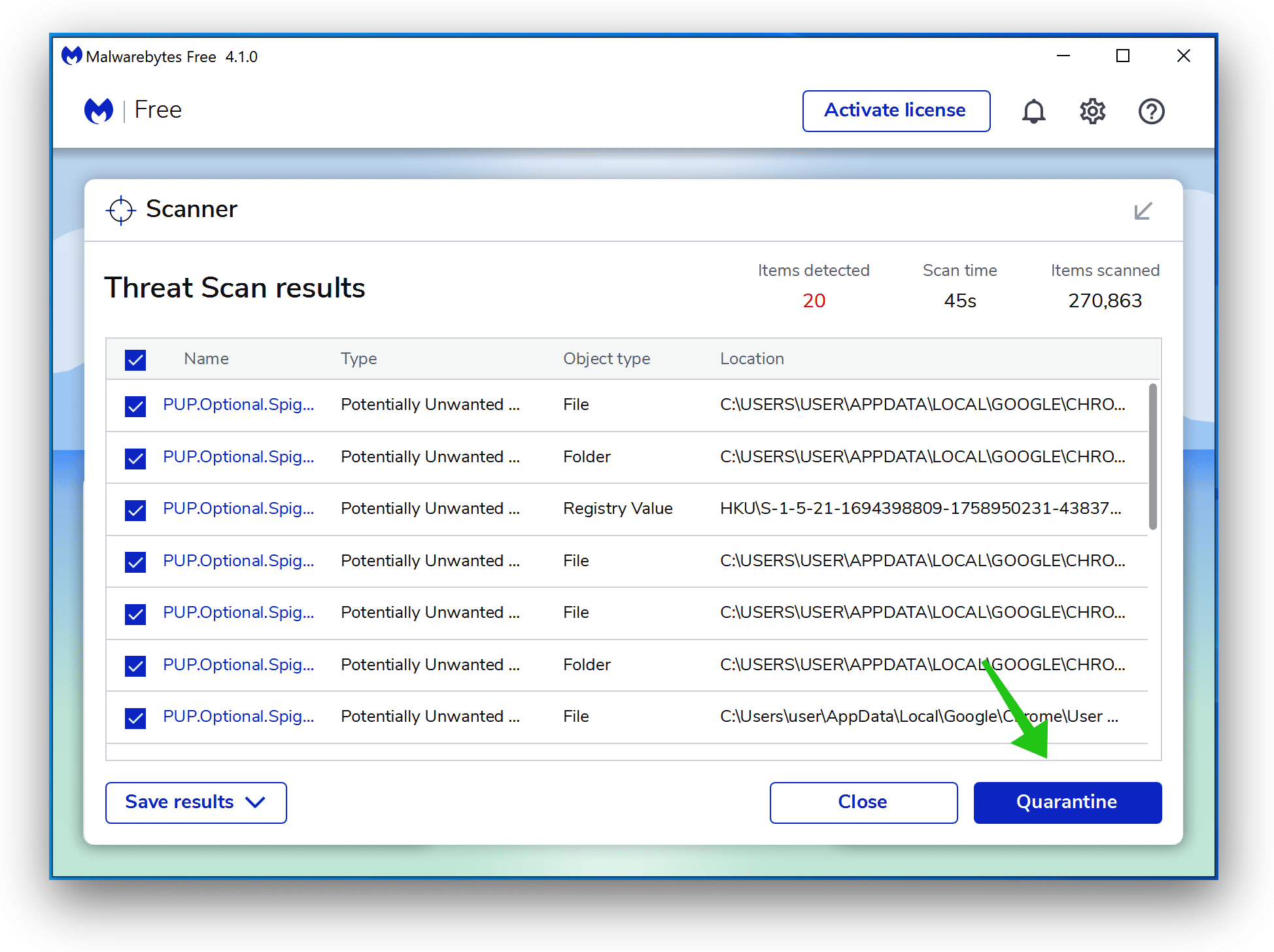
Reboot Windows after all the adware detections are moved to quarantine.
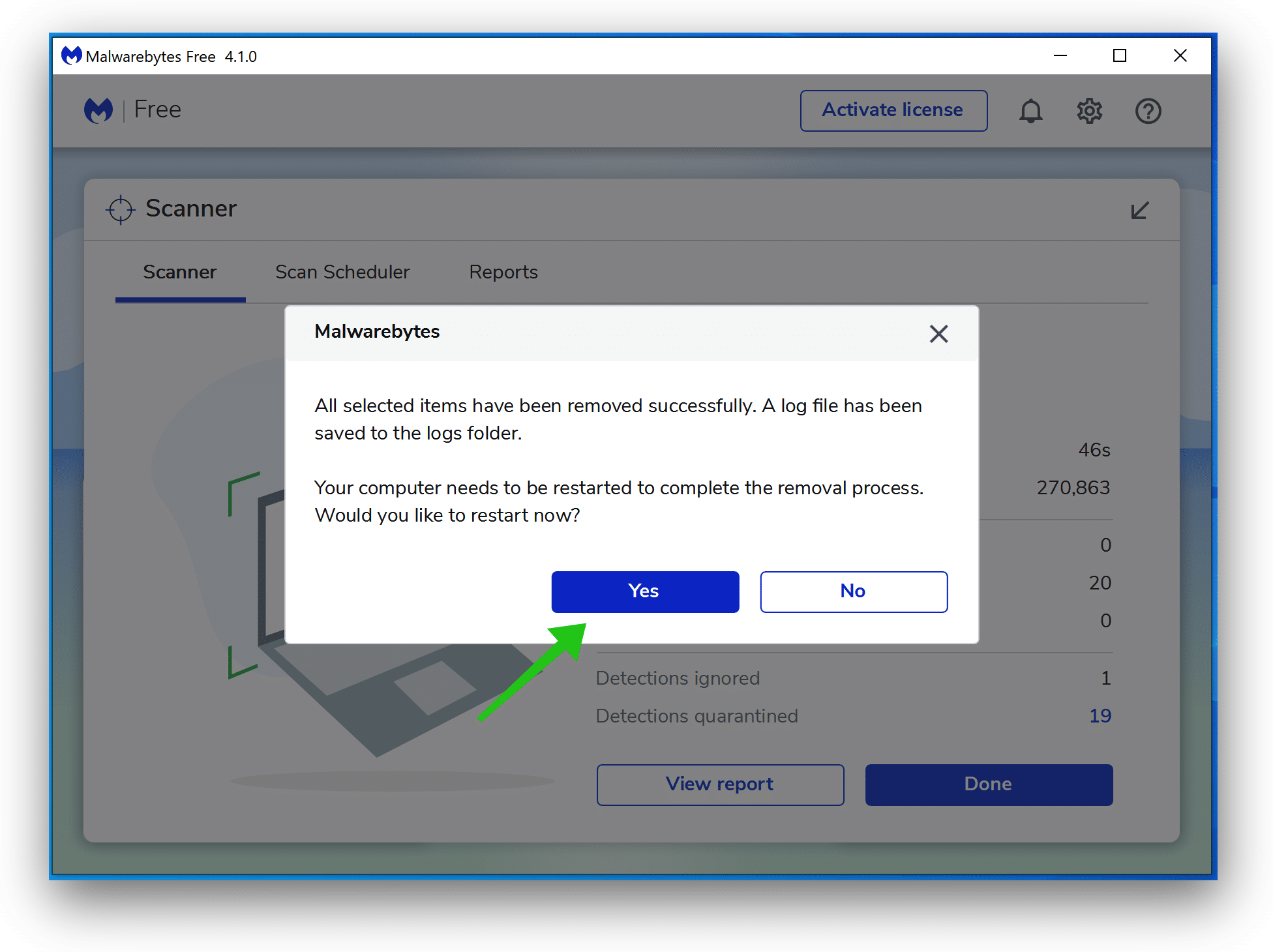
Continue to the next step.
Remove unwanted programs with Sophos HitmanPRO
In this second malware removal step, we will start a second scan to make sure there are no malware remnants left on your Windows 11 computer. HitmanPRO is a cloud scanner that scans every active file for malicious activity on your computer and sends it to the Sophos cloud for detection. In the Sophos cloud both Bitdefender antivirus and Kaspersky antivirus scan the file for malicious activities.
When you have downloaded HitmanPRO install the HitmanPro 32-bit or HitmanPRO x64. Downloads are saved to the Downloads folder on your computer.
Open HitmanPRO to start installation and scan.

Accept the Sophos HitmanPRO license agreement to continue. Read the license agreement, check the box and click on Next.
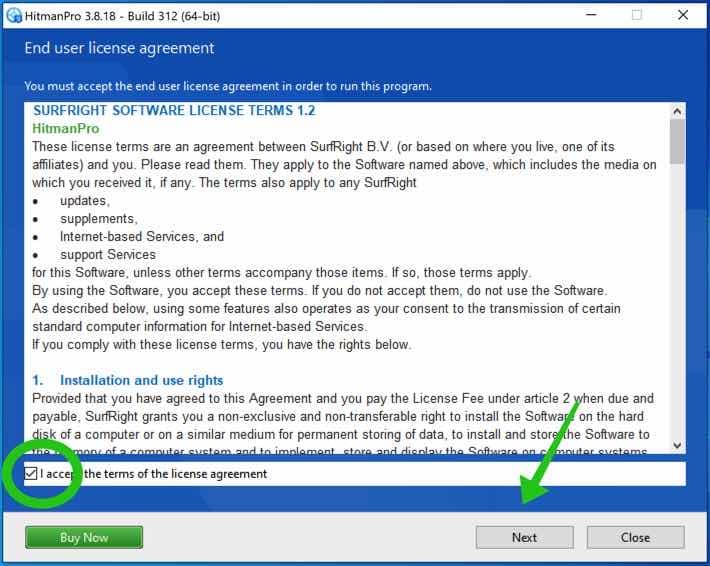
Click the Next button to continue Sophos HitmanPRO installation. Make sure to create a copy of HitmanPRO for regular scans.
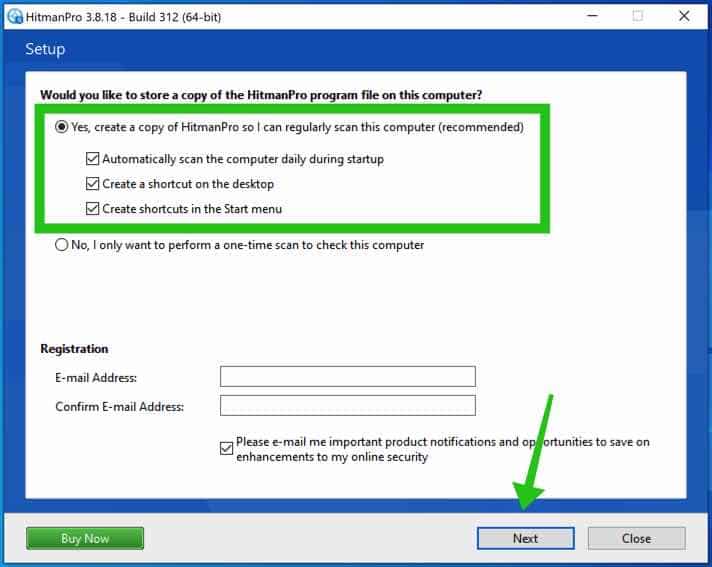
HitmanPRO begins with a scan, wait for the antivirus scan results.
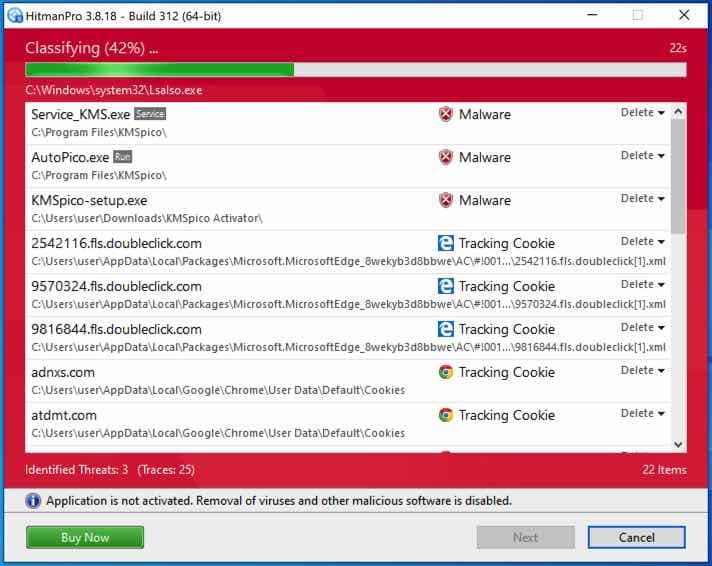
When the scan is done, click Next and activate the free HitmanPRO license. Click on Activate Free license.
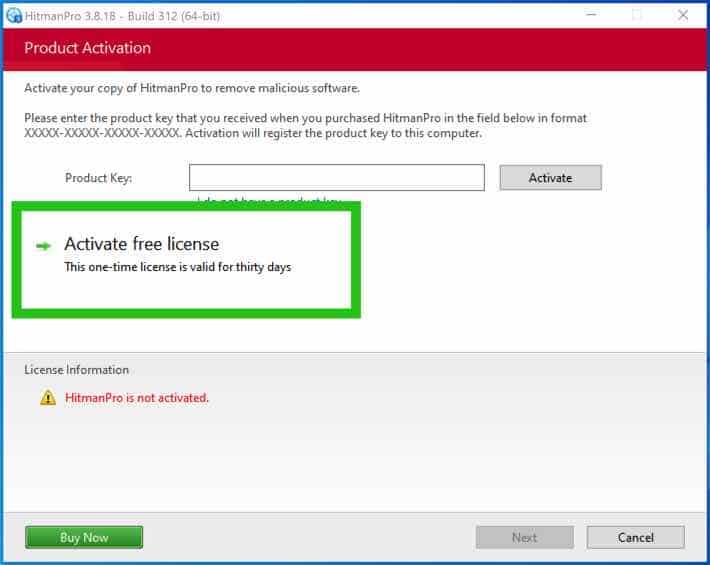
Enter your e-mail for a Sophos HitmanPRO free thirty days license. Click on Activate.
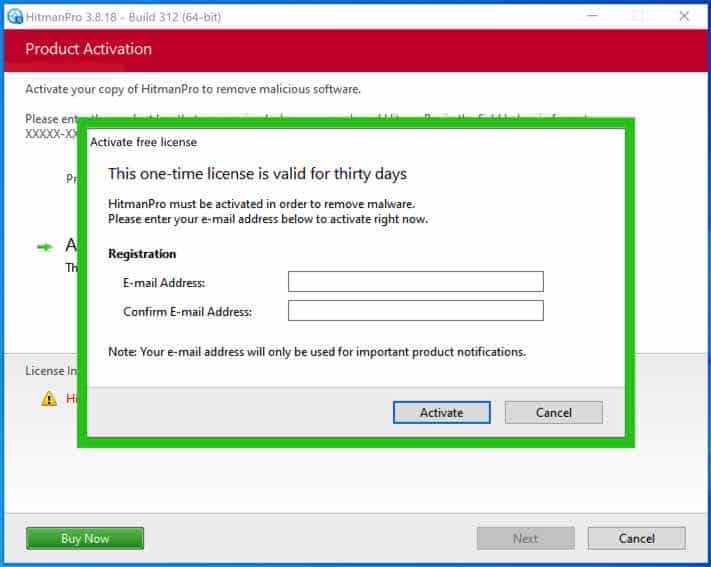
The free HitmanPRO license is successfully activated.
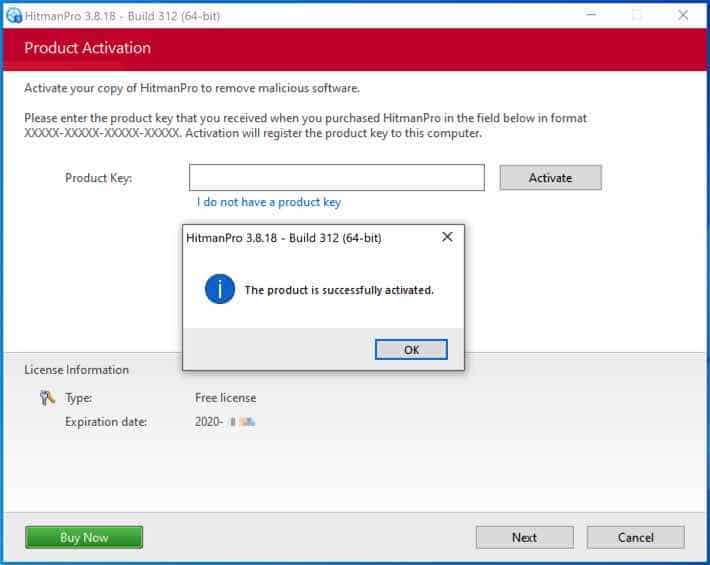
You’ll be presented with the malware removal results, click Next to continue.

Malicious software was partially removed from your computer. Restart your computer to complete removal.
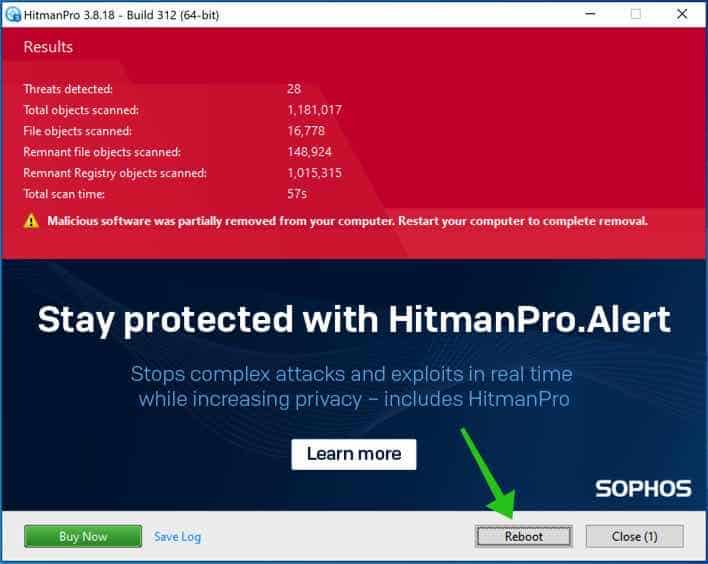
Enjoy a malware from Windows 11 computer.